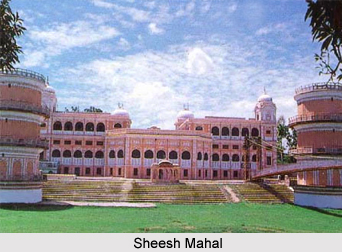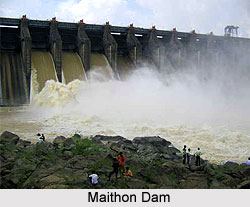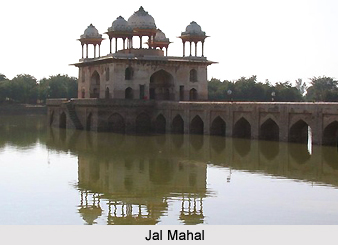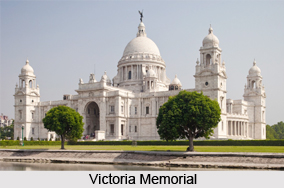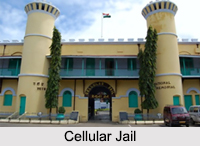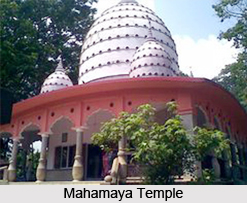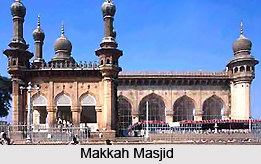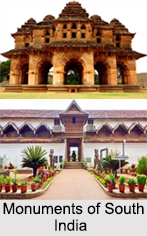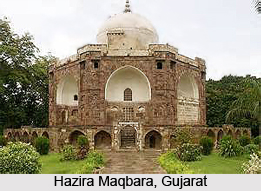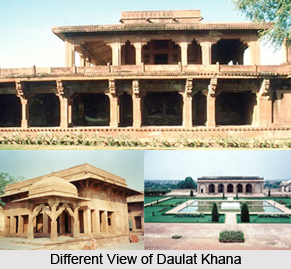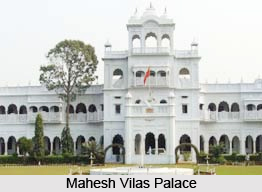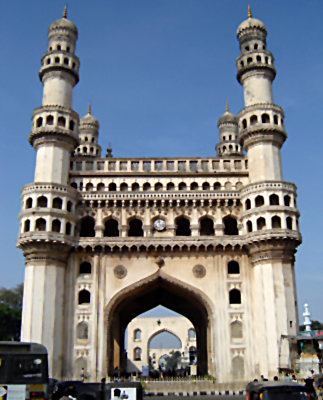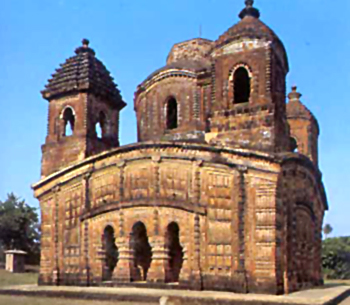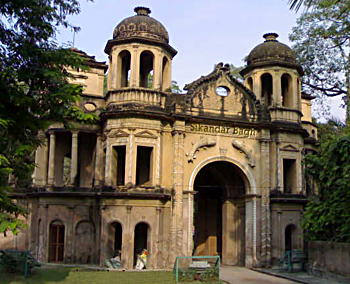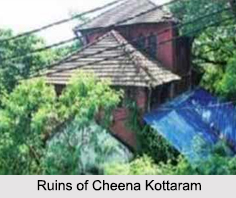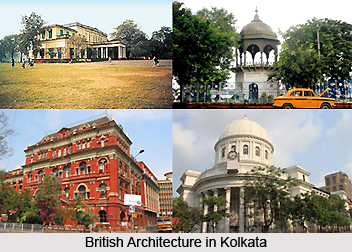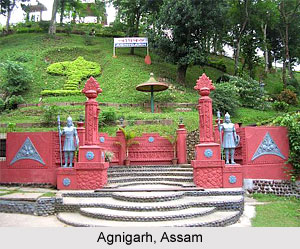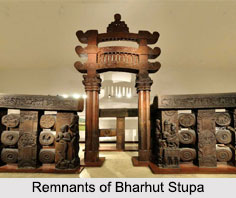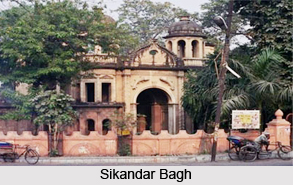 Sikandar Bagh, formerly recognized by the British as Sikunder/Sikandra/Secundra Bagh, is a garden and villa roofed by a fortified wall, with loopholes, gateway and corner bastions, and approx. 150 yards square. It is situated in the Indian city of Lucknow, Oudh, in the Indian state of Uttar Pradesh. This place was set up by last Nawab of Oudh, Wajid Ali Shah (1822-1887), as a summer residence. The name of the villa symbolizes "Garden of Sikandar", perhaps after Alexander the Great, whose name lives on in this form in these parts, or perhaps after Sikandar Mahal Begum, the Nawab`s favourite wife. It was stormed by the British during Sepoy Mutiny 1857 and also witnessed within its walls the massacre of all 2200 Sepoy Mutineers who had made it a stronghold during their Siege of Lucknow. The site now houses the National Botanical Research Institute of India.
Sikandar Bagh, formerly recognized by the British as Sikunder/Sikandra/Secundra Bagh, is a garden and villa roofed by a fortified wall, with loopholes, gateway and corner bastions, and approx. 150 yards square. It is situated in the Indian city of Lucknow, Oudh, in the Indian state of Uttar Pradesh. This place was set up by last Nawab of Oudh, Wajid Ali Shah (1822-1887), as a summer residence. The name of the villa symbolizes "Garden of Sikandar", perhaps after Alexander the Great, whose name lives on in this form in these parts, or perhaps after Sikandar Mahal Begum, the Nawab`s favourite wife. It was stormed by the British during Sepoy Mutiny 1857 and also witnessed within its walls the massacre of all 2200 Sepoy Mutineers who had made it a stronghold during their Siege of Lucknow. The site now houses the National Botanical Research Institute of India.
Origin of Sikandar Bagh
Sikandar Bagh was laid out in about 1800 as a Royal Garden by Nawab Saadat Ali Khan. It was, after some years, developed by Nawab Wajid Ali Shah, the last native ruler of Oudh, during the first half of the 19th century, who used it as his summer villa. The garden also houses a tiny pavilion in the middle that was likely the scene of many performances of Raslila and Kathak Dances, music and poetic mehfils and other cultural activities which the last Nawab had a great appreciation for, indeed possibly too great a one as history has judged him to have been over-fond of his leisure interests.
This article is a stub. You can enrich by adding more information to it. Send your Write Up to content@indianetzone.com
